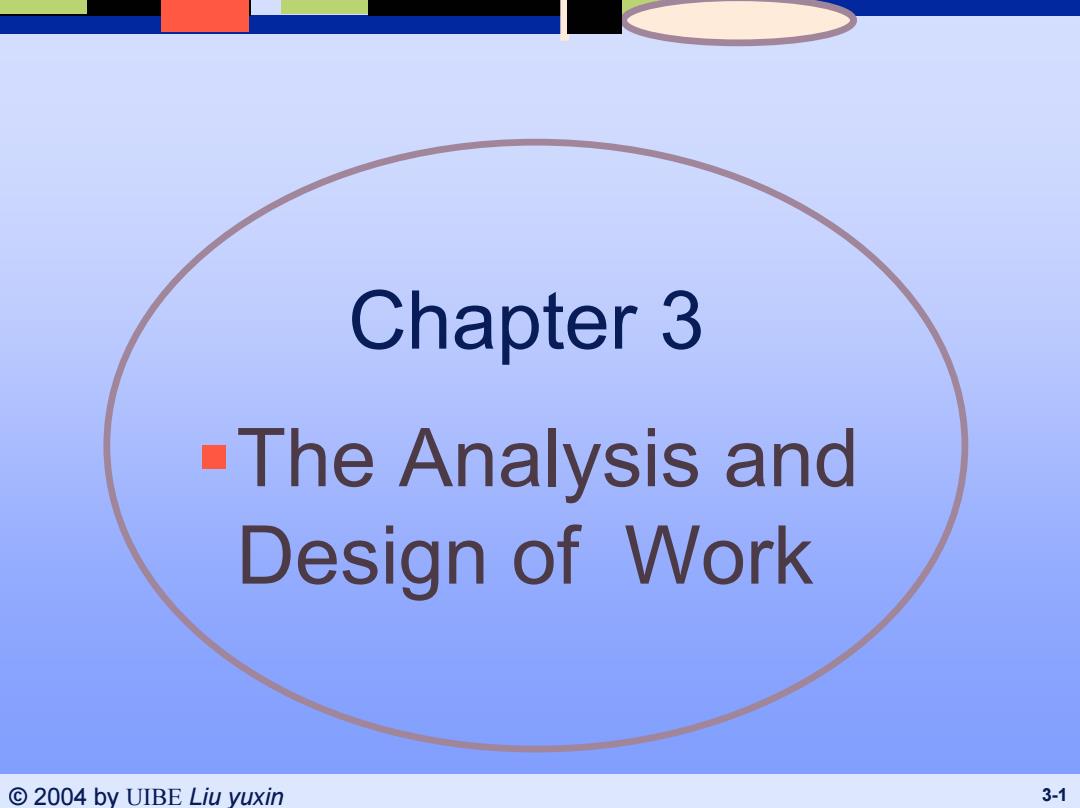
Chapter 3 -The Analysis and Design of Work ©2004 by UIBE Liu yuxin 3-1
© 2004 by UIBE Liu yuxin 3-1 Chapter 3 The Analysis and Design of Work
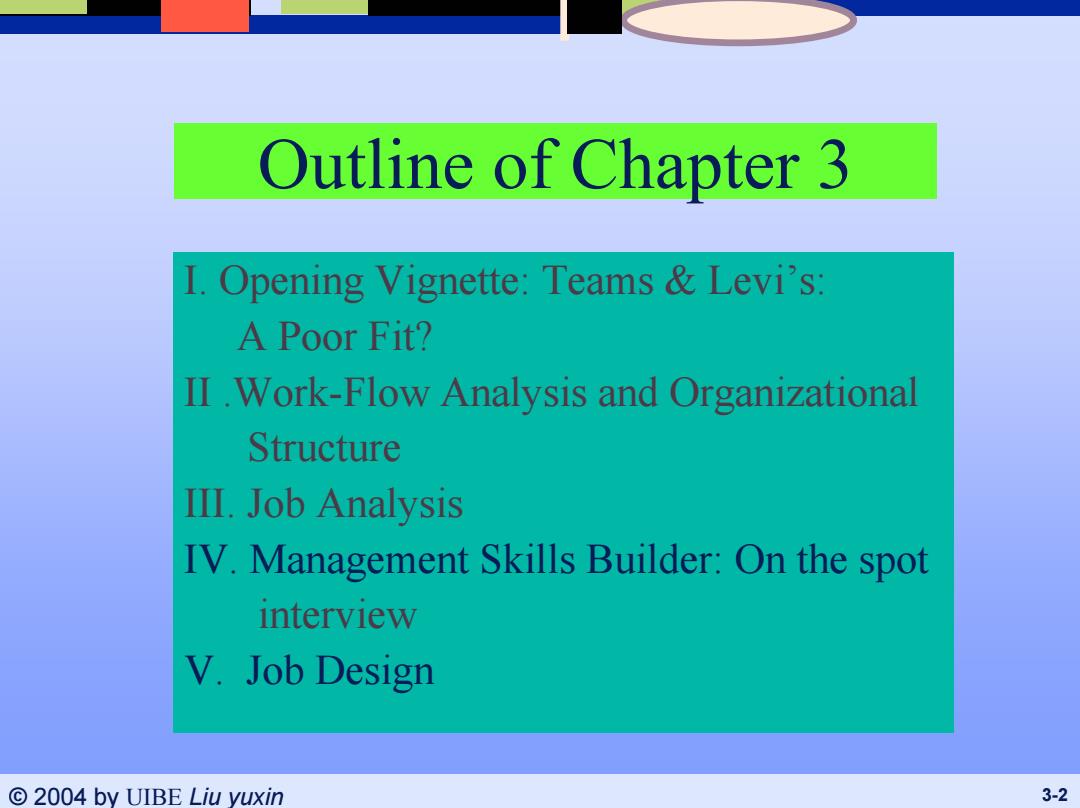
Outline of Chapter 3 I.Opening Vignette:Teams Levi's: A Poor Fit? II.Work-Flow Analysis and Organizational Structure III.Job Analysis IV.Management Skills Builder:On the spot interview V.Job Design ©2004 by UIBE Liu yuxin 3-2
© 2004 by UIBE Liu yuxin 3-2 Outline of Chapter 3 I. Opening Vignette: Teams & Levi’s: A Poor Fit? II .Work-Flow Analysis and Organizational Structure III. Job Analysis IV. Management Skills Builder: On the spot interview V. Job Design
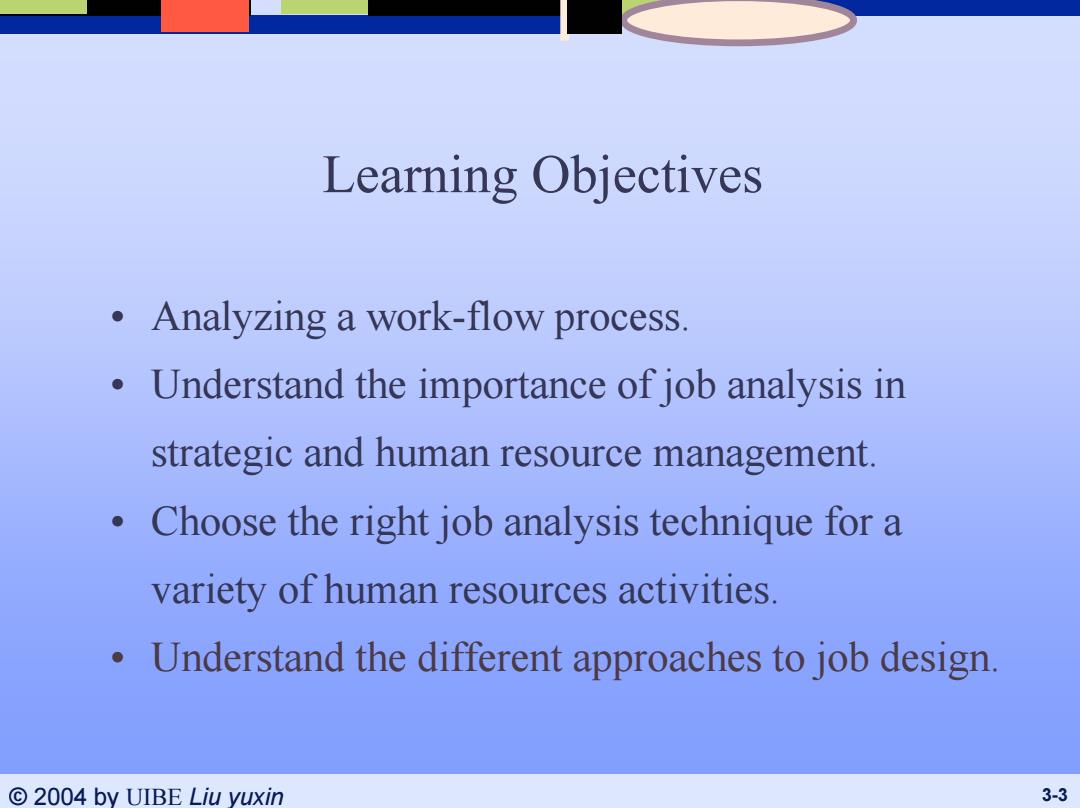
Learning Objectives Analyzing a work-flow process. Understand the importance of job analysis in strategic and human resource management. Choose the right job analysis technique for a variety of human resources activities. Understand the different approaches to job design ©2004 by UIBE Liu yuxin 3-3
© 2004 by UIBE Liu yuxin 3-3 Learning Objectives • Analyzing a work-flow process. • Understand the importance of job analysis in strategic and human resource management. • Choose the right job analysis technique for a variety of human resources activities. • Understand the different approaches to job design
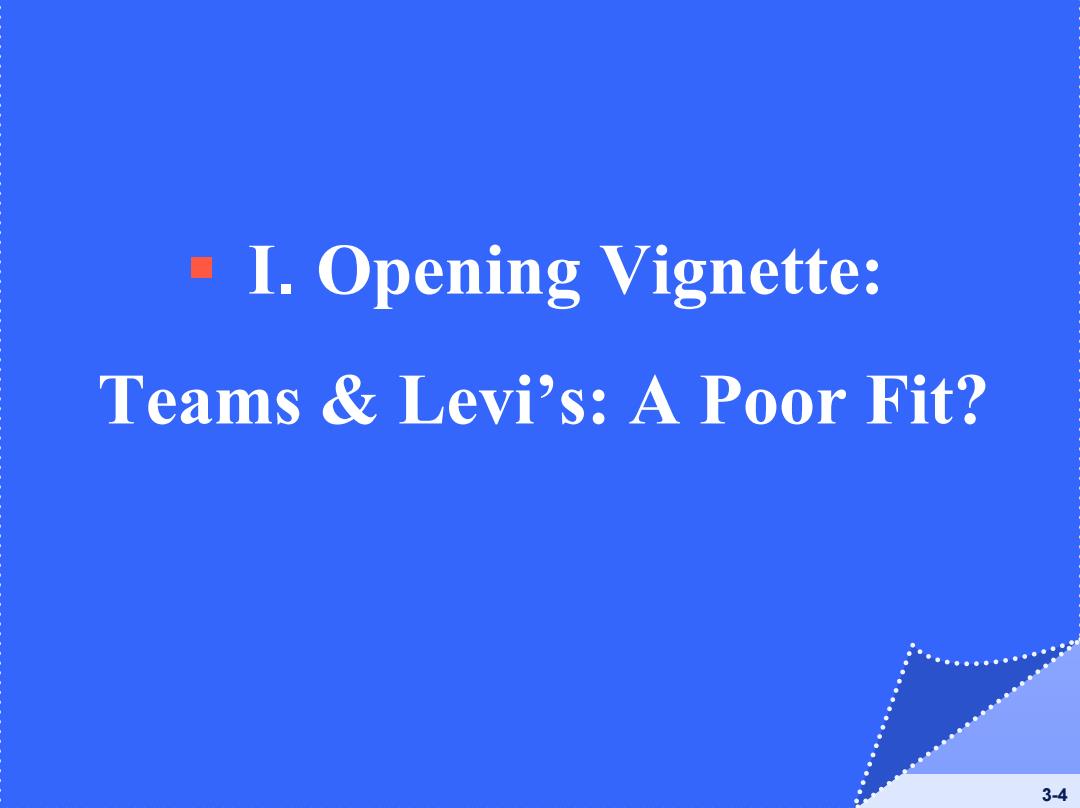
I.Opening Vignette: Teams Levi's:A Poor Fit? 3-4
© 2004 by UIBE Liu yuxin 3-4 I. Opening Vignette: Teams & Levi’s: A Poor Fit?
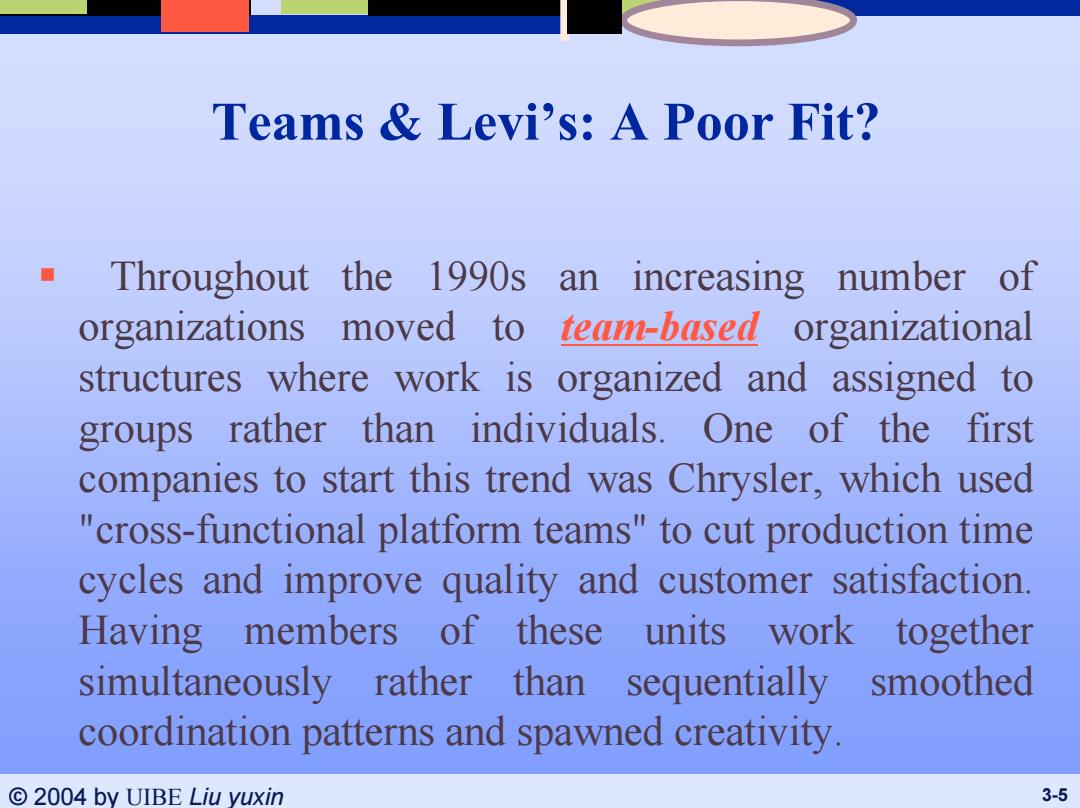
Teams Levi's:A Poor Fit? Throughout the 1990s an increasing number of organizations moved to team-based organizational structures where work is organized and assigned I to groups rather t than individuals.One of the first companies to start this trend was Chrysler,which used "cross-functional platform teams"to cut production time cycles and improve quality and customer satisfaction. Having members of these units swork together simultaneously rather than sequentially smoothed coordination patterns and spawned creativity. ©2004 by UIBE Liu yuxin 3-5
© 2004 by UIBE Liu yuxin 3-5 Teams & Levi’s: A Poor Fit? Throughout the 1990s an increasing number of organizations moved to team-based organizational structures where work is organized and assigned to groups rather than individuals. One of the first companies to start this trend was Chrysler, which used "cross-functional platform teams" to cut production time cycles and improve quality and customer satisfaction. Having members of these units work together simultaneously rather than sequentially smoothed coordination patterns and spawned creativity